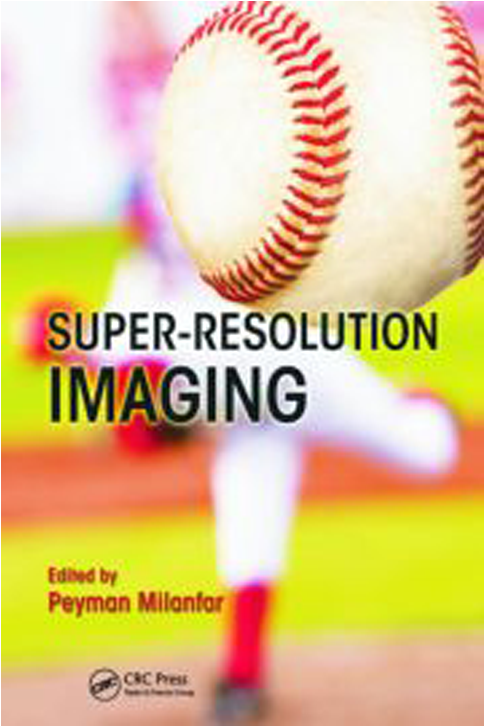
Peyman Milanfar, Ed., 490 pp., ISBN 978-1-4398-1930-2, CRC Press (2010), $153 hardcover.
Reviewed by Bruce H. Pillman, ITT Exelis Geospatial Systems, Rochester, New York.
This book serves as an introduction to the flourishing field of super-resolution imaging. It is a compiled volume, with different authors for each of its 14 chapters. While not having a strong outline or textbook format, the chapters group into several sections.
The first chapter is an introduction and historical review of the field by Yang and Huang. The authors of this chapter have a particularly good perspective on the field, since a paper by Tsai and Huang in 1984 is one of the earliest and most influential in the field.
Chapters 2, 3, 4, and 5 present different locally adaptive spatial approaches to super-resolution. Because the challenges of robust super-resolution are still not well in hand or easily surmounted, the variety of approaches helps illuminate the state of the art and gives the reader insight into different possibilities.
Chapters 6 and 7 address two of the difficult challenges with super-resolution. Chapter 6 addresses the problem of image registration, including in-depth discussion of aliasing in low-resolution images and how it impacts the registration problem. Chapter 7 considers spatially varying blur, a challenging problem avoided in most publications about super-resolution.
Chapters 8, 9, and 10 present several robust approaches to super-resolution. Chapter 8 presents a spatial approach that uses outlier rejection to improve robustness, while 9 and 10 present slightly different Bayesian approaches.
Chapter 11 presents machine-learning-based approaches to super-resolution, entirely avoiding the classical problem of explicit motion estimation.
Chapter 12 discusses application of super-resolution to multichannel images, an important topic in multi- or hyperspectral imaging.
Chapter 13 presents a couple of medical applications of super-resolution, digital mammography and optical coherence tomography. These applications are interestingly different from the usual cases, for example, with a strikingly low signal-to-noise ratio in the low-resolution images for digital mammography. The techniques involved in making these applications work provide additional insight into the interactions between an application and a successful super-resolution algorithm.
Chapter 14 presents a discussion from one of the founders of a company based on super-resolution technology. It brings a slightly different perspective to the challenges of super-resolution, including a discussion about different user objectives to be achieved through use of super-resolution.
Overall, this book is a welcome contribution to the literature and one the reviewer will keep handy. The overall flow of the book is well thought out, and each chapter is well-organized and clearly written. The book has a good balance of depth and breadth, with many references for the reader seeking more depth. This book is especially good as an introduction to the field of super-resolution, giving a view of the development of the field as well as a view of the state of the art.
Bruce H. Pillman, Reviewer.
Biography

Bruce H. Pillman is an image scientist with ITT Exelis Geospatial Systems. Previously, he was a senior principal scientist in the Kodak Research Laboratories. He has experience with hybrid digital imaging systems (scanning film and prints) and digital cameras. His interests include modeling of quality for still images and video, image chain analysis and design, development of algorithms for automatic camera control, and image enhancement algorithms. He holds over 30 patents in digital imaging, focusing primarily on color digital cameras.



